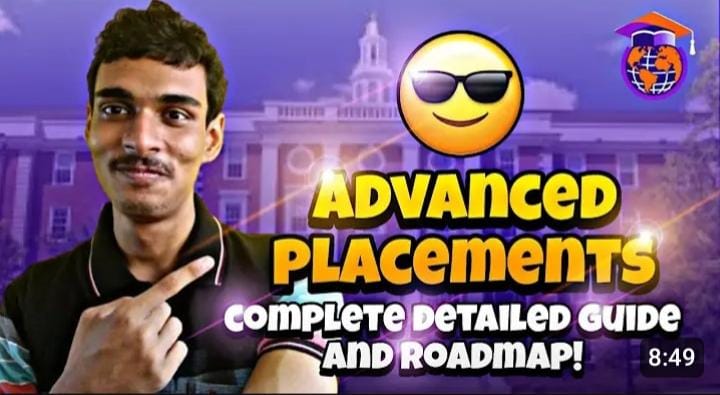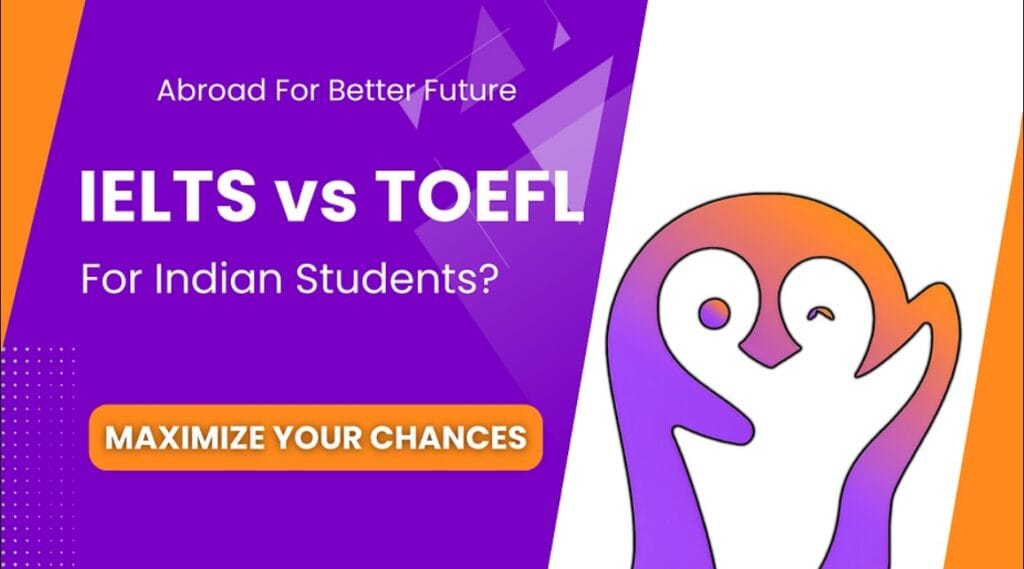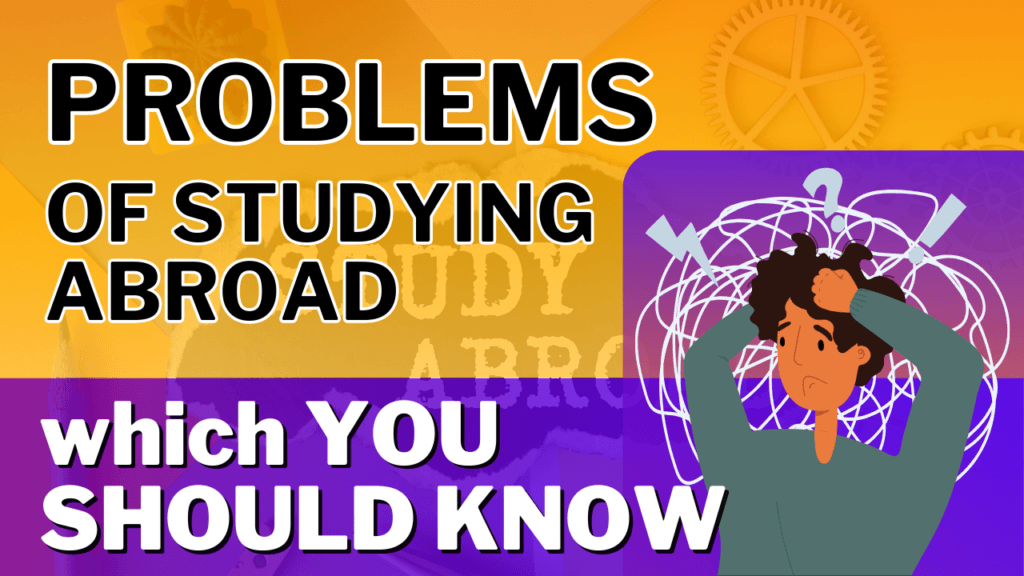Table of Contents of this Study Abroad Blog
I still remember the first time I discovered the whole concept of studying abroad, a senior from our coaching centre gave 5 AP tests with perfect scores displayed in bold letters against his name on a billboard.
APs? What are those? Are there any step-by-step guides?
Luckily, I had my friend (the CEO of AFBF) explain it to me, and today I’ll help you with the same! 🙂 We’ve sorted everything, unfiltered, into discrete steps, so read it through and decide if it’s worth it!
USA? Where Do We Even BEGIN?
- Last year, over 13 lakh students went abroad for studies, of which 4 lakh went to the USA alone! HOWEVER it’s not as easy as it looks, with most accepted applicants pursuing the feeder school route (more on this later)
- To set yourself apart from 100s of thousands of applicants, and beat the abysmal acceptance rates, one must prepare smart and early. The first step is knowing what you’re even getting yourself into, with research.
Wait.. Research?
Don’t worry, this is the easy step. Look into the websites of your dream Universities – it may be MIT, Harvard, Caltech – anything. Now to diversify, what’s the best source for information?
- Identifying Suitable Universities and Programs – The Common App
A Common App account will allow you to discover and look into admission requirements for thousands of US Universities, so that you can find what program works best for you.
(PS : This is where you’ll officially apply to these Universities later on!)
- LinkedIn – a business secret
Find Alumni from your chosen Universities, and reach out to them! It’ll take maybe hundreds of messages to get a reply, but their insights are invaluable 🙂
- The AFBF Community
We have students in this community who have been accepted to schools like UW Madison, Purdue and UT Dallas – if you’re looking for the right resources, you’ll find it here 🙂


What even are Feeder Schools?
- There are schools in India particularly following IB curriculum which build your portfolio from the ground up.
- Similarly, there’s Athena Education, Crimson and other counselling centers which make you completely abroad ready, even publishing research papers (they also charge exorbitantly, in the 10s of lakhs/annum)
Being crystal clear – we are not that.
WE aim to provide a friendly environment for discussion and mutual support – with blunt and well researched information so that your’e never misled 🙂
Understanding Admission Requirements
Let’s familiarise ourselves with some of the important terminology, which you’ll often see come up while researching Study Abroad program
What are Standardized Tests?
Alright, let’s talk about the big, scary tests! But don’t worry, we’ve got you covered. (they aren’t as hard as they seem)
📌 Choosing the Right Test
- If you’re applying for undergrad, you’ll need to take either the SAT or ACT. No, they’re not the same, and yes, everyone has an opinion on which one is harder. 🙃 But if you want our unfiltered opinion – read up on SAT vs ACT! (Try aiming for 1550+ on the SAT and 34+ on the ACT for your application to really hold weight)
- Graduate school? Look into GRE, GMAT, MCAT, or LSAT depending on your field!
📌 Language Proficiency Exams
- If English isn’t your first language (or your schooling wasn’t in English from a board like CBSE or IB), you’ll likely need TOEFL , IELTS or the new underdog, DET
- TOEFL = More academic, all online.
- IELTS = Tests your in-person communication skills too. (But honestly just a pyramid scheme for IDP)
- DET = The easiest to score good grades in, with unlimited free practoce tests
📌 APs (Advanced Placement Courses)
Not a must, but can make your application chef’s kiss ✨. They show you’re challenging yourself with college-level coursework in high school! However, they aren’t cheap at all, and will need at least a few months to prepare for. DON’T put it off till class 12, otherwise you can’t use it in your profile. Applications always start around November and exams are in May
No one explains it better than the CEO of AFBF!
Learn in less than 10 minutes how he qualified for AP rewards in 5 subjects in only a month, and you can too!
PS: Subscribe if you find our content helpful! 🙂
📌 Registering & Studying Like a Pro
- Register early to get your preferred test dates (exam slots disappear faster than concert tickets 🎟️).
- Use Khan Academy (free SAT prep), official guides, and YouTube gurus to ace your test!
- Mock tests are your best friend. Take ‘em like it’s game day! You don’t need to buy expensive courses, the Bluebook platform grants you 5 free tests!
Crafting A Compelling Application
Your application = Your golden ticket. So make it shine!
📌 Personal Statement / SOP
- This is where you tell your story. No, not just your grades, but why you’re passionate about your field and how you’ll change the world 🌍.
- Pro tip: Start with a hook (something intriguing) to stand out! You’ll find the essay topics under the Common App Essay section
📌 Letters of Recommendation (LORs)
- Choose teachers, mentors, or bosses who actually know you (not just someone with a fancy title). Then ask them to write a letter highlighting your skills and personality.
- Give them a heads-up early so they have time to write something awesome! Or even write it for them, teachers are often busy – but they’ll be the ones to submit it. (These are extremely important – remember, the Admissions officer doesn’t know you and this is their only source of reference)
📌 Transcripts & Resume
- Request transcripts ahead of time (some schools take AGES 🕰️). For most colleges in the USA, you’ll need all academic details from class 9-12 (don’t worry if you haven’t appeared for class 12 Board exams – submit a predicted mark-sheet stamped by your school)
- Your resume should highlight extracurriculars (ECs), internships, and skills. Keep it crisp! 📜 If you’re having trouble framing your ECs, use our free-to-use tool to make them sound as impressive as they actually are 🙂
Submitting Applications
Time to hit ‘Submit’! But first… double-check everything.
📌 Application Portals
- Most US colleges use Common App, some have their own portals. Know where to apply! You can apply to a maximum of 20 colleges through here
- Coalition App doesn’t have a limit on the number of colleges you apply to. But do remember, each application requires a fee (~$70)
📌 Deadlines, Deadlines, Deadlines
- Mark your calendar, set alarms, and remind your friends. Deadlines vary based on Early Decision, Early Action, and Regular Decision!
- Early Decision is a binding plan, and applying through this route will mean you have to attend the college if you’re accepted. These start early-November, along with Early Action plans (apply here for higher acceptance rates, but more competitive admissions seasons)
- Regular Decisions fall around January, and is when most applicants apply.
📌 Application Fees
Costs can add up, so check for fee waivers if eligible. Send an email to the colleges you want explaining your situation, and they’ll offer you institutional fee waivers (not always)
Exploring Financial Aid & Scholarships
Let’s talk MONEY—because studying in the USA isn’t cheap, but there are ways to ease the burden. Let’s be clear here first though, if paying for an undergraduate degree is feasible for you – do NOT apply for aid.
There are very few colleges that are Need Blind, meaning that you applying for aid doesn’t affect their selection procedure. A full list of 100% need meeting Need Blind colleges are given below:
📌 University-Specific Scholarships
- Many universities offer merit-based or need-based scholarships. Check their financial aid pages. For need-based aid as an international student, create your CSS profile where you can apply for Aid (Fill this form with extreme care)
📌 External Scholarships
- Examples: Fulbright, Inlaks, Tata, Knight-Hennessy and more. Apply early because these are super competitive.
📌 Assistantships & On-Campus Jobs
- Some grad programs offer TA/RA positions (Teaching/Research Assistantships) that pay your tuition
On-campus jobs can also help—cafés, libraries, research labs, etc. If you secure the post of a Residential Advisor, your living costs are waived from your second year onwards! But apply as early as possible.

Securing Your Student Visa
Congrats! You got in! Now let’s make it official.✨
📌 Receiving the I-20 Form
- Your university will send you an I-20 form (which proves you’re accepted). You’ll need this for your visa application!
📌 Paying the SEVIS Fee
- It’s mandatory, so pay the $350 fee and save the receipt!
📌 Completing DS-160 & Scheduling the Visa Interview
- Fill out Form DS-160 (online) and book your visa interview at the US embassy or consulate. 🏛️
- Interview tip: Be confident, honest, and clear about your study plans!
Pre-Departure Prep
You’re ALMOST there! Just a few last steps before you hop on that flight.
📌 Find Accommodation
- Decide between on-campus dorms (easier to adjust) or off-campus housing (cheaper but needs more research). 🏡
📌 Book Your Flight
- Book early for better prices. Also, check luggage limits (because let’s be real, you’re packing a lot). 🎒
📌 Get Health Insurance
- Most US universities require health insurance. Get it sorted before departure, and beware DO NOT buy cheap Health Insurance. Explore why
📌 Pre-Departure Orientation
- Universities & groups like AFBF offer orientation programs to help you settle in! Join them! 👥
Settling in the USA
Welcome to your new home! Here’s how to adjust smoothly. 😊
📌 Understanding Culture Shock
- Expect some cultural differences! Be open-minded, explore, and don’t be afraid to ask questions. 🙌
📌 Managing Finances
- Open a US bank account (it’s easier for transactions & saving money). 💳
📌 Using University Resources
- Take advantage of career services, mental health support, student clubs, and more. 📚
Final Thoughts
You did it! 🎉 From researching universities to getting your visa stamped, this journey is no joke. But trust me—it’s worth it.
- The International connections you build
- Insane internship offers, even at the undergraduate level
- A learning environment unparalleled even by top IITs
So go ahead, chase that dream. And if you ever feel lost, remember—there’s a whole community (like AFBF 😉) cheering you on. Good luck! 🍀
Frequently Asked Questions (FAQ) on Studying in the USA
- What are the age requirements to apply to U.S. universities?
Generally, applicants must have completed high school and be at least 17 years old to enroll in U.S. universities.
- What is the academic calendar for U.S. universities?
The academic year typically runs from August to May, often divided into two semesters: Fall (August–December) and Spring (January–May). Some institutions also offer a Summer session.
- How many universities can I apply to in the USA?
It’s advisable to apply to a balanced mix of reach, match, and safety schools to enhance your admission prospects. The limit is 20 on Common App, and limitless on Coalition APp
- What standardized tests are required for undergraduate admission?
Most U.S. universities require either the SAT or ACT for undergraduate admissions. Additionally, non-native English speakers may need to take an English proficiency test like TOEFL or IELTS.
- Are English proficiency tests mandatory for all international students?
Yes, if English is not your first language or if your previous education wasn’t conducted in English, you’ll likely need to submit TOEFL, IELTS, or other recognized English proficiency test scores – like the DET which is reputable at lower costs!
- What is the cost of studying in the USA?
Tuition fees vary widely among institutions and programs. On average, undergraduate programs can cost between $20,000 to $40,000 per year, while graduate programs may range from $20,000 to $45,000 annually. It’s essential to check specific university websites for precise figures.
- Are scholarships available for international students?
Yes, many U.S. universities offer merit-based and need-based scholarships to international students. Additionally, external organizations provide scholarships based on various criteria. Research each institution’s financial aid offerings and external scholarship opportunities thoroughly.
- Can international students work while studying in the USA?
F-1 students can work on-campus up to 20 hours per week during academic sessions and full-time during breaks. Off-campus employment is restricted but may be permitted under specific programs like Optional Practical Training (OPT) or Curricular Practical Training (CPT.
- What is the difference between OPT and CPT?
Optional Practical Training (OPT) allows students to work in their field of study for up to 12 months after completing their academic program. Curricular Practical Training (CPT) permits students to engage in employment as part of their curriculum, such as internships or cooperative education programs, before graduation.
- How do I apply for a U.S. student visa?
After receiving acceptance from a U.S. institution, you’ll be provided with a Form I-20. With this form, you can apply for an F-1 student visa by completing the DS-160 form online, paying the SEVIS fee, and scheduling a visa interview at the nearest U.S. embassy or consulate.
- Can I stay in the USA after graduation?
Graduates on F-1 visas may be eligible for OPT, allowing them to work in their field of study for up to 12 months post-graduation. STEM graduates may qualify for a 24-month extension. After OPT, securing employer sponsorship for an H-1B work visa is a common pathway to remain in the USA.
- Do I need health insurance while studying in the USA?
Yes, most U.S. universities require international students to have health insurance. Some institutions offer their own plans, while others may allow external coverage that meets specific criteria. Ensure you have adequate coverage to avoid high medical costs.
Abroad For Better Future is a study abroad community for Indian students.
We don’t ask MONEY for the information we provide. We aim to help other Indian students in fulfilling their study abroad dreams by providing the right info. If you are a prospective Indian student, you can join our cohorts (WhatsApp groups, it’s FREE) to get access to:
Fill up this form and we will let you know if you are abroad. And if you know anyone interested but confused about how to go abroad, kindly refer us. We would really appreciate your support.
In case you are in doubt about Can You Beat the High Cost of AP Exams?
Feel free to read this: Guide to Indian Government Scholarships for Studying Abroad After 12th Grade
Hope your study abroad dreams get fulfilled and you stay connected with family for Indian students
Get your personalized study plan today!
Book Free Session










